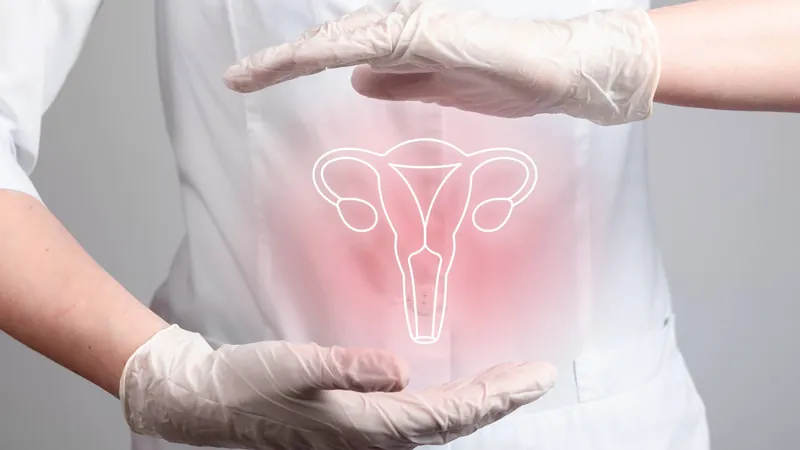
Could HPV Self-Testing Be the Game Changer for Cervical Cancer Screening?
2025-01-03
Author: Wei Ling
January marks Cervical Cancer Awareness Month, amplifying efforts to promote prevention and early detection of this debilitating disease.
A groundbreaking global study has shown that self-administered Human Papillomavirus (HPV) tests can effectively categorize HPV-positive women into three distinct risk groups, potentially revolutionizing the approach to cervical cancer screening. Cervical cancer is a pressing health threat, responsible for over 340,000 deaths worldwide each year, primarily in low- and middle-income countries with limited access to preventive care.
Revolutionary Insights from Cutting-Edge Study
A collaborative study conducted by researchers from Karolinska Institutet and Queen Mary University of London involved 855 women in England to assess a new risk assessment method for cervical cancer detection using at-home HPV tests. This trial specifically targeted women who were overdue for routine cervical screening, a demographic often overlooked in preventive healthcare.
After self-testing, participants underwent follow-up examinations by healthcare professionals. The researchers developed a novel method for analyzing self-administered HPV test results, taking into account the HPV type and viral load measured by the cycle threshold (Ct) value. This innovative approach categorized women into high-, medium-, and low-risk groups, enhancing the understanding of individual risk levels based on specific viral characteristics.
Women who tested positive for HPV type 16 with a Ct value below 30 faced the highest risk for developing severe cervical pre-cancer or cancer. Alarmingly, the study revealed that 8.3% of participants (71 women) were diagnosed with severe cervical pre-cancer or cancer. In stark contrast, over half of the HPV-positive women fell into the low-risk category, indicating only a 4% chance of developing severe cervical pre-cancer or cancer within one year.
Professor Peter Sasieni, senior author of the study from Queen Mary University of London, highlighted the implications of these findings: “For women in the low-risk group, retesting after 12 months is a safe approach, while those in the moderate-risk category should pursue clinical testing for closer evaluation.”
The Urgent Need for Prevention
Cervical cancer originates in the cervix, the passage connecting the uterus to the vagina, with around 99% of cases linked to high-risk HPV infections. This virus is often transmitted through sexual contact, and while most infections resolve autonomously, persistent infections can culminate in cervical cancer.
Despite being largely preventable and treatable when detected early, cervical cancer remains the fourth most frequent malignancy among women globally. Projections indicate a disturbing increase in new cases, from 570,000 in 2018 to an estimated 700,000 by 2030, with deaths rising from 311,000 to 400,000 if prevention and control measures are not intensified.
The World Health Organization (WHO) asserts that early detection dramatically improves treatment success rates, allowing for significant chances of positive outcomes. Even when diagnosed at later stages, appropriate treatments and palliative care can enhance disease management and quality of life. Dr. Princess Nothemba (Nono) Simelela, WHO Assistant Director-General, emphasized the urgent need for action in the fight against cervical cancer: “The staggering mortality rate from cervical cancer is largely due to decades of neglect by the global health community. However, we have the opportunity to change this narrative.”
With the potential of HPV self-testing to make screenings more accessible and effective, the hope is strong that it could significantly alter the landscape of cervical cancer prevention and treatment in the coming years. Stay informed and proactive; knowledge is power in the fight against cancer!

 Brasil (PT)
Brasil (PT)
 Canada (EN)
Canada (EN)
 Chile (ES)
Chile (ES)
 Česko (CS)
Česko (CS)
 대한민국 (KO)
대한민국 (KO)
 España (ES)
España (ES)
 France (FR)
France (FR)
 Hong Kong (EN)
Hong Kong (EN)
 Italia (IT)
Italia (IT)
 日本 (JA)
日本 (JA)
 Magyarország (HU)
Magyarország (HU)
 Norge (NO)
Norge (NO)
 Polska (PL)
Polska (PL)
 Schweiz (DE)
Schweiz (DE)
 Singapore (EN)
Singapore (EN)
 Sverige (SV)
Sverige (SV)
 Suomi (FI)
Suomi (FI)
 Türkiye (TR)
Türkiye (TR)
 الإمارات العربية المتحدة (AR)
الإمارات العربية المتحدة (AR)